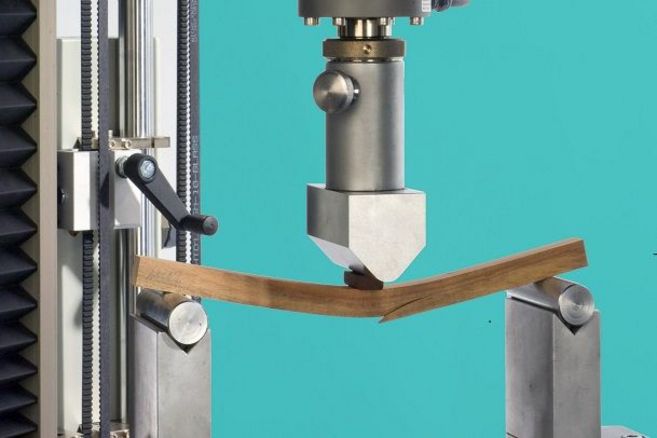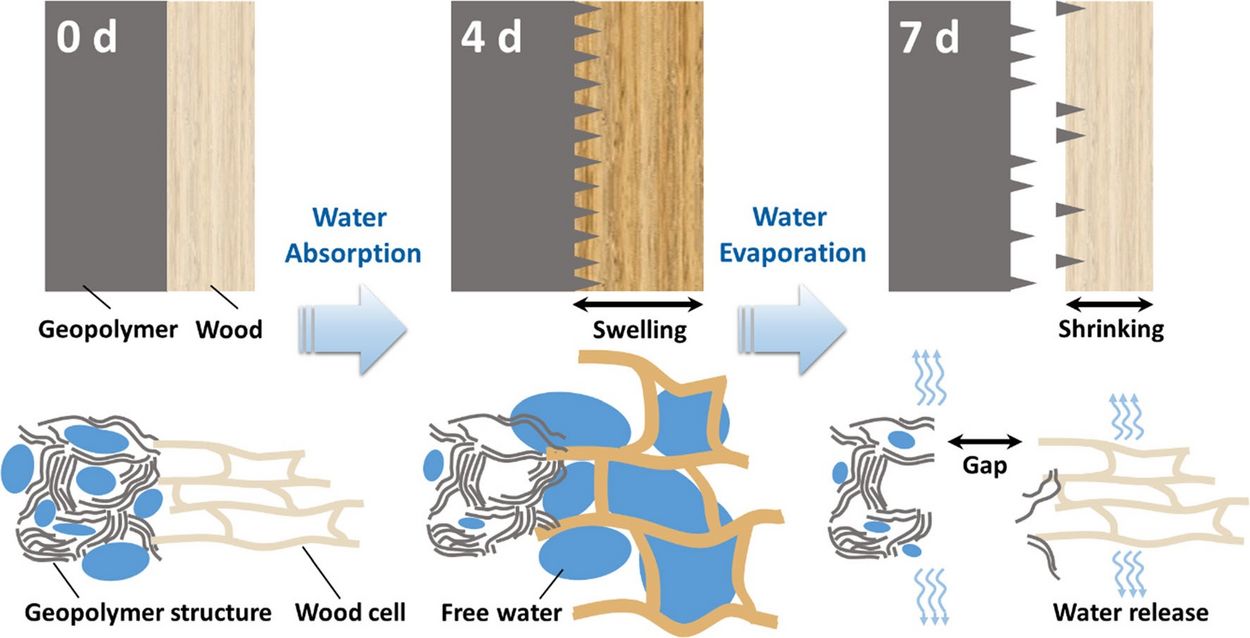The use of geopolymers as a basis for concrete is considered to have considerable substitution potential in terms of global warming potential. Studies have shown that geopolymers are suitable for unreinforced and reinforced concrete applications due to their technical properties. Nevertheless, there are reservations that stand in the way of their use as a building material in significant quantities of mass construction material.
Unlike cementitious building materials, the matrix of geopolymers is formed from an alkali-activated aluminium-silicate mortar. These are very resistant to acid and heat, but show little chemical and physical compatibility with lignified natural fibres. So, in order to make a good composite material, the interfaces between matrix and fibre need to be improved and systematically evaluated.
In a recently published paper together with Beijing Forestry University and the University of Hamburg, the project team coordinated by the Thünen Institute has developed a novel method specifically for geopolymer-wood composites. In addition Together with the Universidade Sao Paulo, we were able to show that the pre-treatment of the raw materials (e.g. particle size adjustment) influences the strength and durability of concrete geopolymer wood.
The team of scientists from China, Ghana, Brazil and Germany is thus continuing an innovative line of research that has already carried out important exploratory work at the Thünen Institute for Wood Research in the past.
Contact Person: Dr. Goran Schmidt
More informations:
- Ye, H., Asante, B., Schmidt, G. et al. Interfacial bonding properties of the eco-friendly geopolymer-wood composites: influences of embedded wood depth, wood surface roughness, and moisture conditions. J Mater Sci 56, 7420–7433 (2021). https://link.springer.com/article/10.1007%2Fs10853-021-05775-8
- Asante, B., Schmidt, G., Teixeira, R. et al. Influence of wood pretreatment and fly ash particle size on the performance of geopolymer wood composite. Eur. J. Wood Prod. 79, 597–609 (2021). https://link.springer.com/article/10.1007/s00107-021-01671-9
Project website: http://www.biohome.uni-hamburg.de/




![[Translate to English:] Logo des Bundesministerium für Ernährung und Landwirtschaft](/media/allgemein/logos/BMEL_Logo.svg)